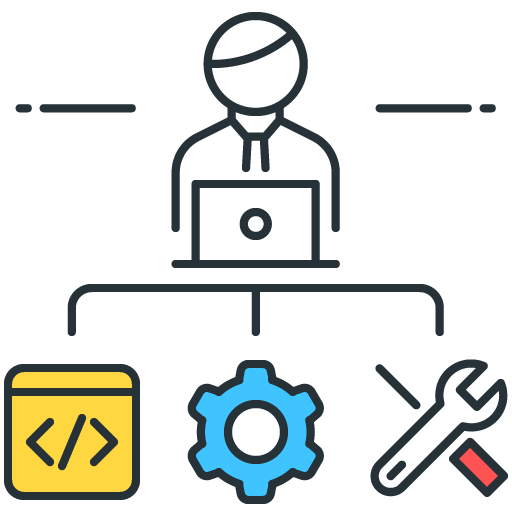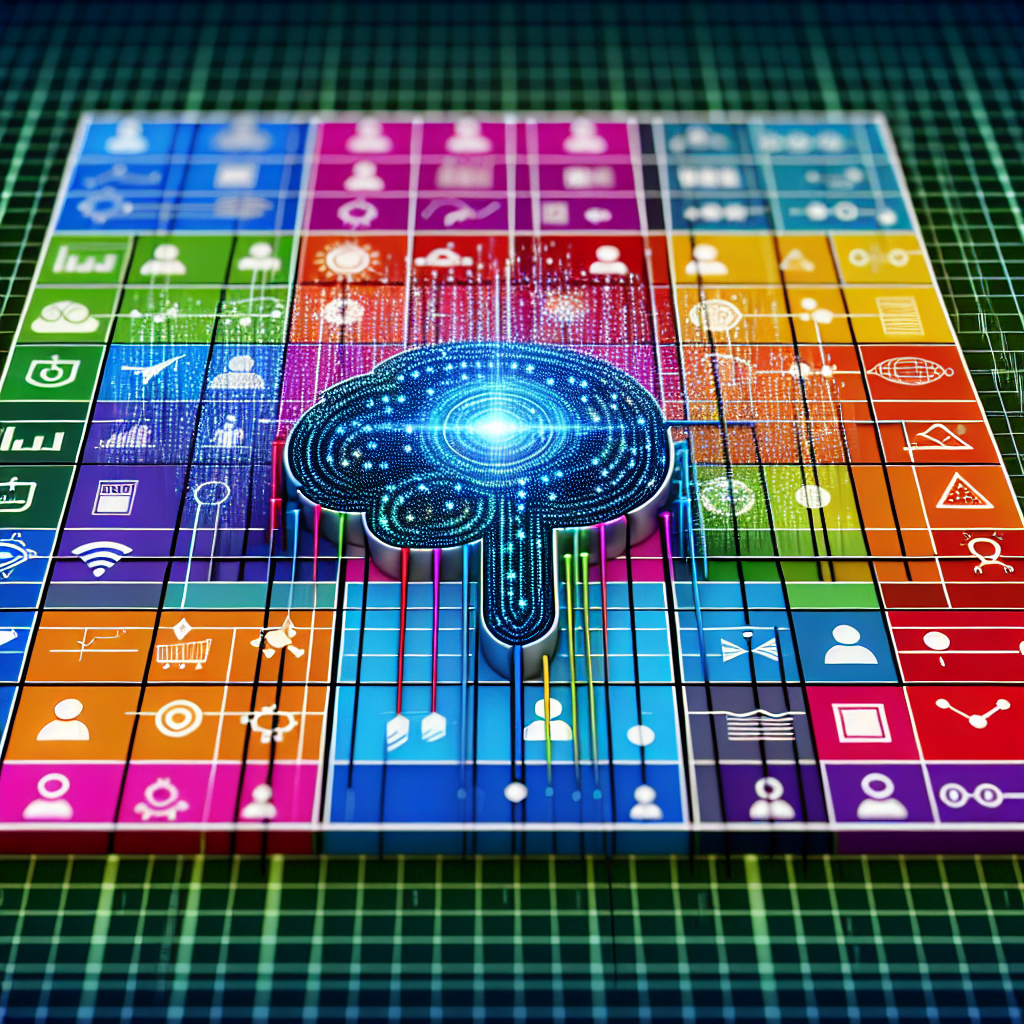
Start thinking more like an analyst.
Learn data science, natural language processing, and big data analysis essentials at your own pace.
Japanese Youth Sue Utility Giants – A Bold Legal Battle for Climate Justice
In an unprecedented move, 16 Japanese youths have taken the bold step to file a lawsuit against utility companies, asserting that their carbon emissions are a gross violation of human rights and the rights of future generations. This is a ground-breaking case that has put Japan’s commitment to its climate goals under the microscope.
The defendants in this landmark case are 10 major power plant operators who are responsible for a whopping 40 percent of Japan’s energy-related carbon dioxide emissions. These companies include some of the biggest names in the industry such as Hokkaido Electric Power Co., Tohoku Electric Power Co., Hokuriku Electric Power Co., Kansai Electric Power Co., Chugoku Electric Power Co., Shikoku Electric Power Co., Kyushu Electric Power Co., Electric Power Development Co., Kobe Steel Ltd., and JERA Co.
The lawsuit claims that the self-set emission reduction targets for 2030 by these companies are not only insufficient but also rely heavily on unproven technologies. These include the burning of coal mixed with ammonia and underground carbon dioxide storage, both of which have yet to be thoroughly tested and proven effective.
The first hearing of this game-changing case is slated for October 24. This comes at a crucial moment as Japan, the world’s fourth-largest economy, is due to release updated emission reduction targets for this fiscal year. The current goal of the country is to achieve carbon neutrality by 2050.
The plaintiffs are calling for a halt to emissions that exceed the allowed amounts under civil law. They believe that the current goals of these companies do not align with the international climate targets and this discrepancy needs to be addressed urgently.
This lawsuit is a part of a growing global trend and follows successful legal actions in other countries. For instance, similar cases have been won in South Korea and Switzerland. This is marking a significant victory for young environmental activists who are increasingly taking up legal battles to fight against climate change.
This case signifies a paradigm shift in how young people are taking a stand against environmental issues. It serves as a reminder that the youth are no longer passive bystanders but active participants in the fight against climate change. It is a bold step towards a sustainable future that respects the rights of both the present and future generations.
Science4Data is committed to cut through greenwashing and measure real impact. Join the journey to a sustainable future. Your actions matter.
Elon Musk’s X Unveils New Privacy Policy
Elon Musk-owned social media platform, X (formerly Twitter), has unveiled significant changes to its privacy policy, allowing third-party collaborators to harness user data for training their AI models. This revision follows trends set by platforms like Reddit, which have begun licensing data to AI organizations as a new potential revenue source.
The updated Privacy Policy of X provides intricate details on how user data can be used. One key feature of this new policy is the inclusion of an opt-out option. However, it remains unclear where users can locate this setting to prevent sharing of their data. This policy change is set to come into effect from November 15.
According to the revised policy, user information may be shared with third-party entities, potentially for their independent purposes, such as training AI models. This will be dependent on the user’s settings or if the users choose to share their data. A potential opt-out option is set to be introduced for users who prefer their data not to be utilized by third parties.
In addition to these changes, X has also redefined its data retention policy. The platform now states that it will store different types of information for varying lengths of time. This will depend on multiple factors, including legal requirements and considerations pertaining to safety and security.
In an intriguing move, a new “Liquidated Damages” section has been introduced in X’s Terms of Service. This section states that any organization scraping its content will be held liable for damages. This development comes in the wake of advertiser withdrawals and boycotts and can potentially be viewed as an attempt to monetize X data.
The modifications in X’s privacy policy and terms of service reflect a strategic shift towards data monetization and third-party collaboration. The implications of these changes on user privacy and data security will be worth monitoring in the coming months.
Revolutionizing Customer Engagement: Harnessing LLMs and Chatbots for Enhanced Insights
In the rapidly evolving landscape of digital communication, businesses are increasingly turning to advanced technologies to enhance customer engagement and streamline operations. The integration of Large Language Models (LLMs) with chatbots is one such innovation that promises to revolutionize how businesses interact with their customers. By leveraging the capabilities of LLMs, companies can gain deeper insights into customer interactions and preferences, leading to continuous improvements in content and messaging strategies.
Integration of LLMs with Chatbots
The integration of LLMs with chatbots marks a significant leap forward in artificial intelligence applications. LLMs, such as OpenAI’s GPT-3, are designed to understand and generate human-like text, making them ideal for enhancing the functionality of chatbots. These models can process and interpret complex language inputs, allowing chatbots to engage in more natural and meaningful conversations with users. This integration not only improves the accuracy of responses but also enables chatbots to handle a wider range of queries, providing a seamless user experience.
Gaining Deeper Customer Insights
One of the most valuable outcomes of integrating LLMs with chatbots is the ability to gain deeper insights into customer behavior and preferences. By analyzing the interactions between customers and chatbots, businesses can identify patterns and trends that reveal important information about customer needs and expectations. This data-driven approach allows companies to make informed decisions about product development, marketing strategies, and customer service enhancements. The insights gained can also help businesses anticipate customer needs and proactively address potential issues, leading to improved customer satisfaction.
Continuous Improvement of Content
The insights derived from LLM-enhanced chatbots provide a foundation for the continuous improvement of content. By understanding what resonates with customers, businesses can refine their content to ensure it remains relevant, engaging, and valuable. This iterative process involves analyzing customer feedback, monitoring engagement metrics, and making data-driven adjustments to content strategies. As a result, businesses can create more effective marketing campaigns, educational materials, and support resources that align with customer interests and needs.
Enhancing Messaging Strategies
Effective messaging is crucial for successful customer engagement, and LLMs offer the ability to craft personalized and compelling messages that resonate with individual customers. By leveraging the insights gained from chatbot interactions, businesses can develop messaging strategies that are more targeted and impactful. This involves tailoring messages to specific customer segments, using language and tone that align with their preferences, and delivering content through the most appropriate channels. The result is a more personalized and engaging customer experience that drives higher conversion rates and fosters brand loyalty.
Understanding Customer Preferences
Understanding customer preferences is key to delivering personalized experiences that meet individual needs and expectations. LLMs, with their advanced natural language processing capabilities, can analyze vast amounts of data to uncover subtle nuances in customer preferences. This understanding enables businesses to offer personalized recommendations, tailor product offerings, and customize services to align with customer desires. By delivering experiences that are tailored to individual preferences, businesses can enhance customer satisfaction, increase retention rates, and build long-term loyalty.
The integration of LLMs with chatbots represents a transformative approach to customer engagement and business operations. By gaining deeper insights into customer interactions and preferences, businesses can continuously improve their content and messaging strategies. This not only enhances the customer experience but also drives business growth and success in a competitive market. As technology continues to advance, the potential for LLMs and chatbots to revolutionize customer engagement will only continue to grow, offering exciting opportunities for businesses to innovate and thrive.
Connect with our expert to explore the capabilities of our latest addition, AI4Mind Chatbot. It’s transforming the social media landscape, creating fresh possibilities for businesses to engage in real-time, meaningful conversations with their audience
AI-Driven Customer Segmentation – Enhancing Targeting Precision
Introduction to AI-Driven Customer Segmentation
In today’s competitive business environment, understanding and targeting the right customer segments is crucial for success. AI-driven customer segmentation is revolutionizing how businesses approach this task. By utilizing sophisticated algorithms and machine learning techniques, companies can create highly detailed customer profiles. This approach not only improves the accuracy of marketing efforts but also enhances the overall customer experience by delivering more personalized content and offers.
Benefits of AI in Customer Segmentation
The integration of AI in customer segmentation brings numerous benefits:
- Enhanced Data Analysis: AI can process and analyze vast datasets far more efficiently than traditional methods. This capability allows businesses to uncover hidden patterns and insights that can inform strategic decisions.
- Improved Targeting Accuracy: By identifying specific customer behaviors and preferences, AI enables more precise targeting. This leads to higher engagement rates and better conversion outcomes.
- Real-Time Adaptability: AI systems can adapt to changes in customer behavior in real-time, ensuring that marketing strategies remain relevant and effective.
- Cost Efficiency: Automating the segmentation process reduces the need for extensive manual analysis, saving both time and resources.
AI Models Used for Customer Segmentation
Several AI models are commonly used in customer segmentation:
- Clustering Algorithms: Techniques like K-means and hierarchical clustering group customers based on similarities in their data, such as purchasing behavior or demographic information.
- Decision Trees: These models use a tree-like structure to make decisions based on customer data, allowing for complex segmentation based on multiple variables.
- Neural Networks: These models are capable of handling large and complex datasets, making them ideal for identifying intricate patterns and relationships within customer data.
- Collaborative Filtering: Often used in recommendation systems, this approach predicts customer preferences by analyzing the behavior of similar users.
Techniques for Creating Specific Customer Segments
Creating specific customer segments involves several key steps:
- Data Collection and Preprocessing: Gathering relevant data from various sources and ensuring it is clean and formatted correctly is essential for accurate segmentation.
- Feature Selection: Identifying the most significant variables that influence customer behavior helps in creating meaningful segments.
- Model Application: Applying AI models to the prepared data to generate initial customer segments.
- Validation and Refinement: Continuously validating and refining segments to ensure they remain accurate and relevant over time.
Challenges and Considerations in AI-Driven Segmentation
Despite its advantages, AI-driven segmentation presents several challenges:
- Data Privacy and Security: Handling large volumes of customer data requires robust measures to protect sensitive information and comply with regulations.
- Model Complexity: The complexity of AI models can make them difficult to interpret and implement without specialized expertise.
- Resource Requirements: Implementing AI solutions can be resource-intensive, requiring investment in technology and training for staff.
- Ethical Considerations: Ensuring that AI-driven segmentation does not lead to biased or discriminatory practices is crucial.
AI-driven customer segmentation offers a powerful tool for businesses seeking to enhance their marketing strategies. By understanding and addressing the benefits, models, techniques, and challenges associated with this approach, companies can better position themselves to meet the evolving needs of their customers and achieve greater success in the marketplace.
The Damaging Effects of Rising CO2 Levels and Nitrogen Deposition
The impact of rising atmospheric CO2 and nitrogen deposition on plant biodiversity is a growing concern among environmental scientists. These two factors are causing significant negative effects on plant species richness, with nitrogen deposition contributing to global biodiversity loss.
A 24-year long study involving 108 grassland plots aimed to understand the intricate relationship between elevated CO2 levels and nitrogen deposition, and how they impact biodiversity. Initially, the study found that nitrogen decreased plant species richness less at high CO2 levels. However, with time, this interaction reversed, with high CO2 levels amplifying the biodiversity losses due to nitrogen enrichment.
The conclusion drawn from this study suggests that the abundance of dominant species in many grasslands will likely increase due to the combined effect of CO2 and nitrogen. This could potentially worsen the negative impacts of nitrogen deposition on plant diversity. The potential negative impact on global grassland biodiversity due to rising CO2 levels is a significant concern for conservation efforts, and it is something that needs to be addressed urgently.
The study further revealed that elevated CO2 levels nearly tripled species losses due to long-term simulated nitrogen pollution. The number of plant species per plot reduced by an average of 7% at ambient carbon dioxide levels and by a whopping 19% at elevated carbon dioxide levels.
The BioCON experiment, which was part of the study, showed that the application of both nitrogen and carbon dioxide promoted plant growth. However, this led to competitive exclusion where a few dominant species out-competed others for sunlight.
The interaction between elevated CO2 and nitrogen deposition presents a significant challenge to maintaining plant biodiversity. The study’s findings highlight the urgency of addressing the impacts of these atmospheric changes on our ecosystems. The knowledge gained from this study can inform science-based strategies for protecting and preserving the world’s grassland ecosystems amid a changing climate.
Science4Data is committed to cut through greenwashing and measure real impact. Join the journey to a sustainable future. Your actions matter.
Enhancing Healthcare Through Multiagent Collaboration
Introduction to Multiagent Systems in Healthcare
Multiagent systems consist of multiple interacting intelligent agents that work collaboratively to perform tasks. These systems are designed to mimic human decision-making processes and can operate autonomously or semi-autonomously. In healthcare, multiagent systems are employed to enhance efficiency and effectiveness in various operations, from administrative tasks to direct patient care. By leveraging artificial intelligence and machine learning, these systems can process vast amounts of data, identify patterns, and make predictions, thereby supporting healthcare professionals in delivering high-quality care.
Integration of Multiagent Systems in Healthcare
The integration of multiagent systems involves embedding these intelligent agents into healthcare processes. This integration facilitates seamless communication and coordination among different healthcare units, leading to enhanced operational efficiency. For instance, multiagent systems can connect electronic health records (EHRs) with diagnostic tools and treatment protocols, ensuring that patient information is up-to-date and accessible across all departments. This interconnectedness reduces redundancy, minimizes errors, and accelerates the delivery of care.
Patient Monitoring through Multiagent Systems
Multiagent systems play a crucial role in patient monitoring by continuously collecting and analyzing patient data from various sources, such as wearable devices, sensors, and medical imaging. These systems provide real-time insights, enabling healthcare providers to make informed decisions and deliver timely interventions. For example, in a hospital setting, multiagent systems can monitor vital signs and alert medical staff to any abnormalities, allowing for prompt response to potential health issues. Additionally, these systems can facilitate remote monitoring, enabling patients to receive care from the comfort of their homes while maintaining constant communication with their healthcare providers.
Resource Allocation in Healthcare
Efficient resource allocation is vital in healthcare settings, where resources are often limited and demand is high. Multiagent systems optimize the distribution of resources such as medical staff, equipment, and facilities, ensuring that they are utilized effectively to meet patient needs. By analyzing data on patient flow, treatment durations, and resource availability, these systems can predict demand and allocate resources accordingly. This optimization helps reduce wait times, improve patient satisfaction, and maximize the use of healthcare infrastructure.
Emergency Response Coordination
In emergency situations, rapid response is critical to saving lives. Multiagent systems enhance emergency response coordination by facilitating quick communication and decision-making among emergency teams. These systems can integrate data from various sources, such as emergency calls, GPS, and hospital databases, to provide a comprehensive overview of the situation. By analyzing this data, multiagent systems can prioritize tasks, allocate resources, and coordinate the efforts of first responders, hospitals, and other agencies, thereby improving response times and outcomes.
Intelligent Collaboration for Better Healthcare Outcomes
The intelligent collaboration of multiagent systems results in improved healthcare outcomes by enhancing the accuracy and efficiency of healthcare delivery. These systems enable healthcare providers to deliver personalized and precise care to patients by integrating data from multiple sources and applying advanced analytics. For example, multiagent systems can support precision medicine by analyzing genetic, environmental, and lifestyle data to tailor treatments to individual patients. This personalized approach not only improves patient outcomes but also reduces the risk of adverse effects and unnecessary treatments.
The integration of multiagent systems in healthcare is transforming the industry by improving efficiency, accuracy, and patient outcomes. As technology continues to advance, the role of multiagent systems in healthcare will become increasingly significant. By embracing these systems, healthcare providers can enhance their ability to deliver high-quality care, ultimately leading to better health outcomes for patients and more efficient healthcare systems overall.








